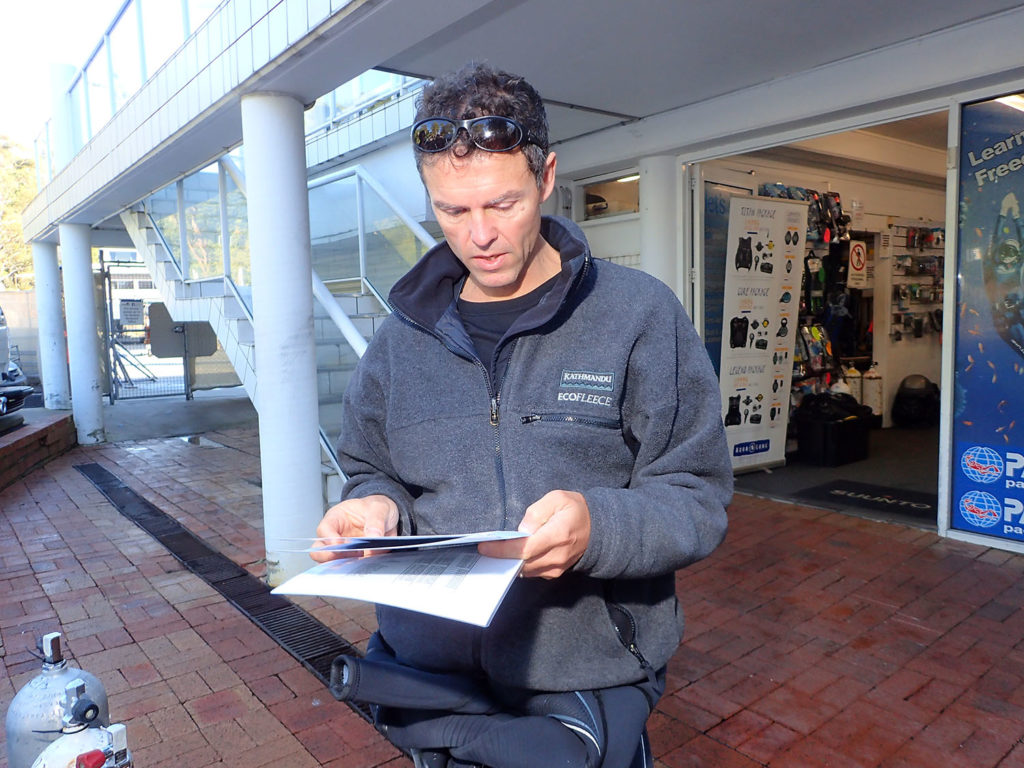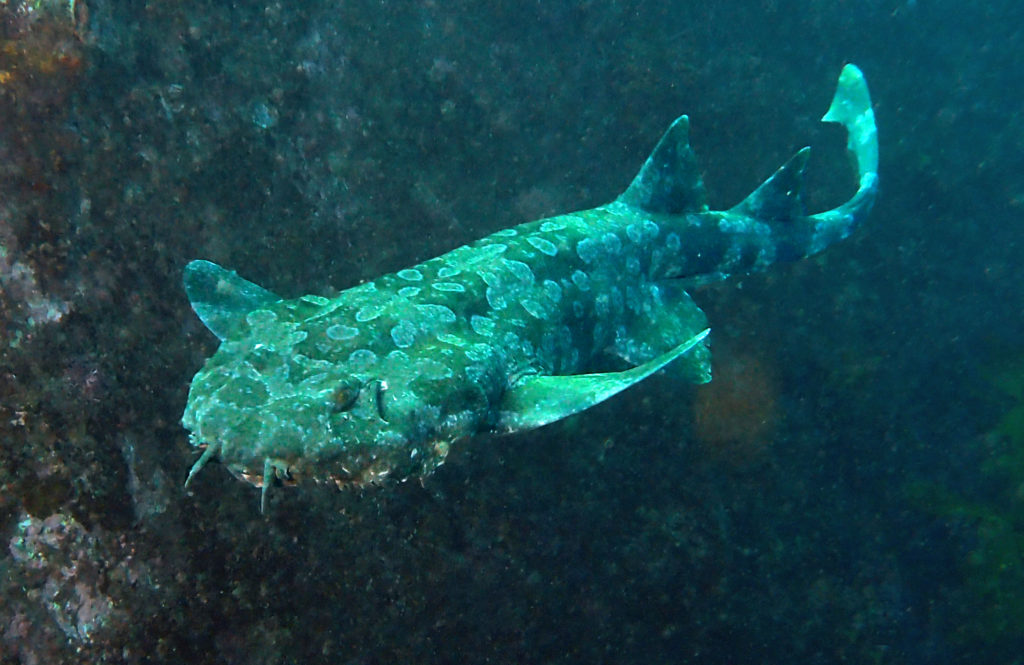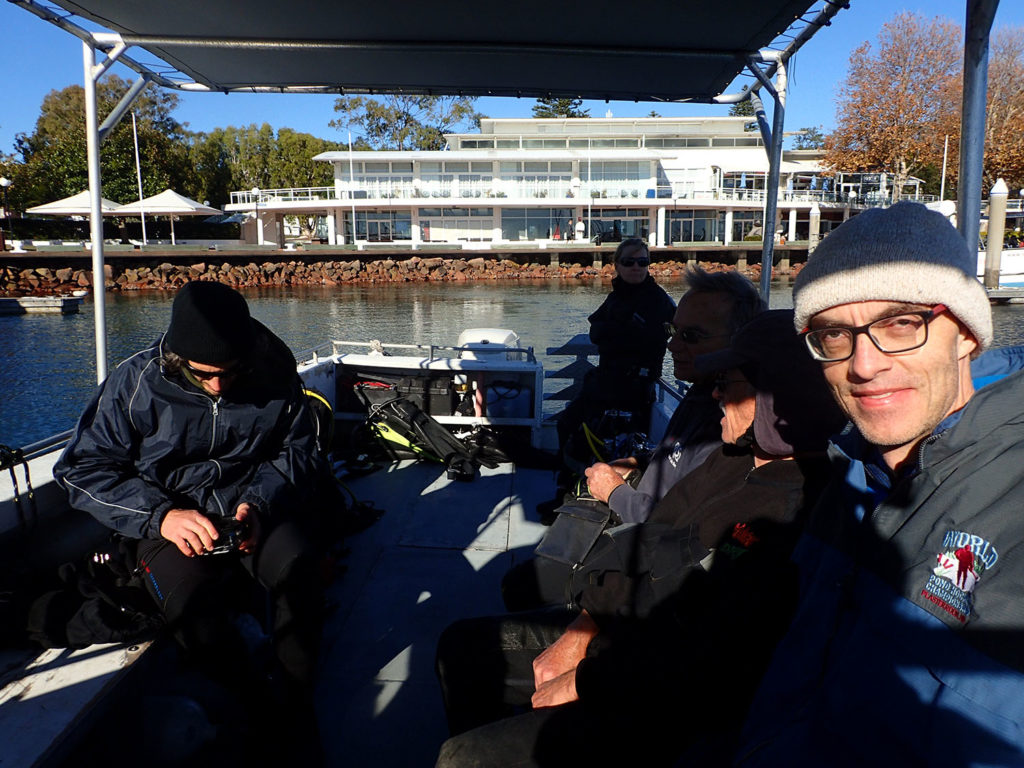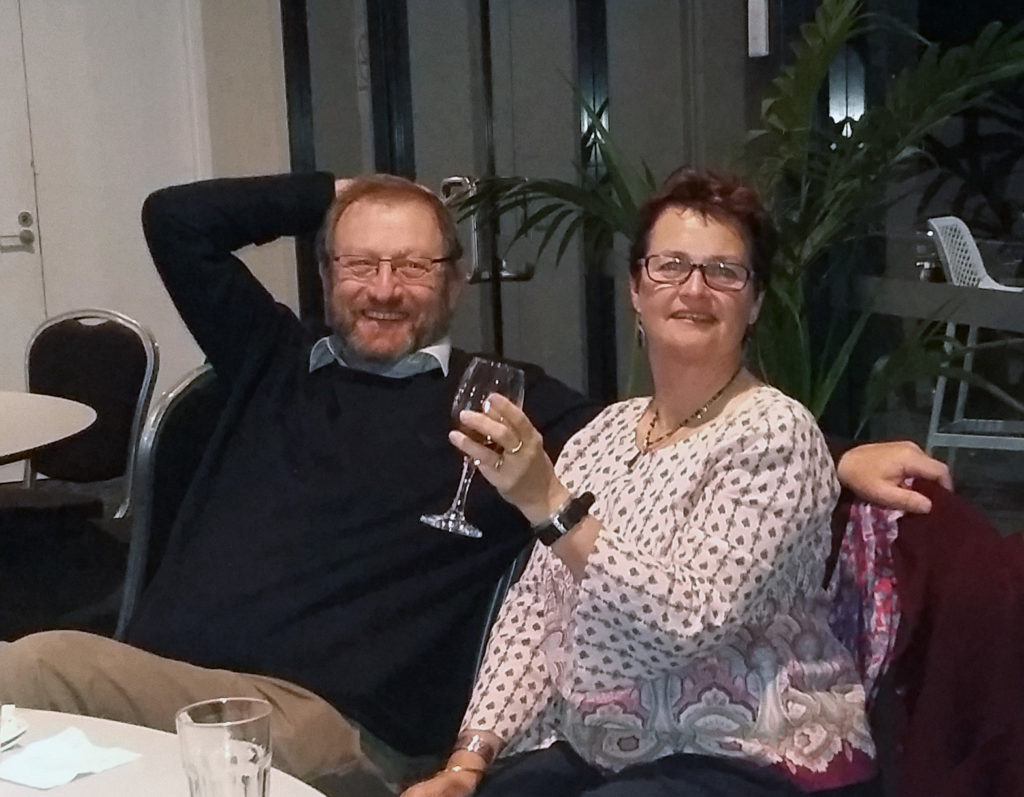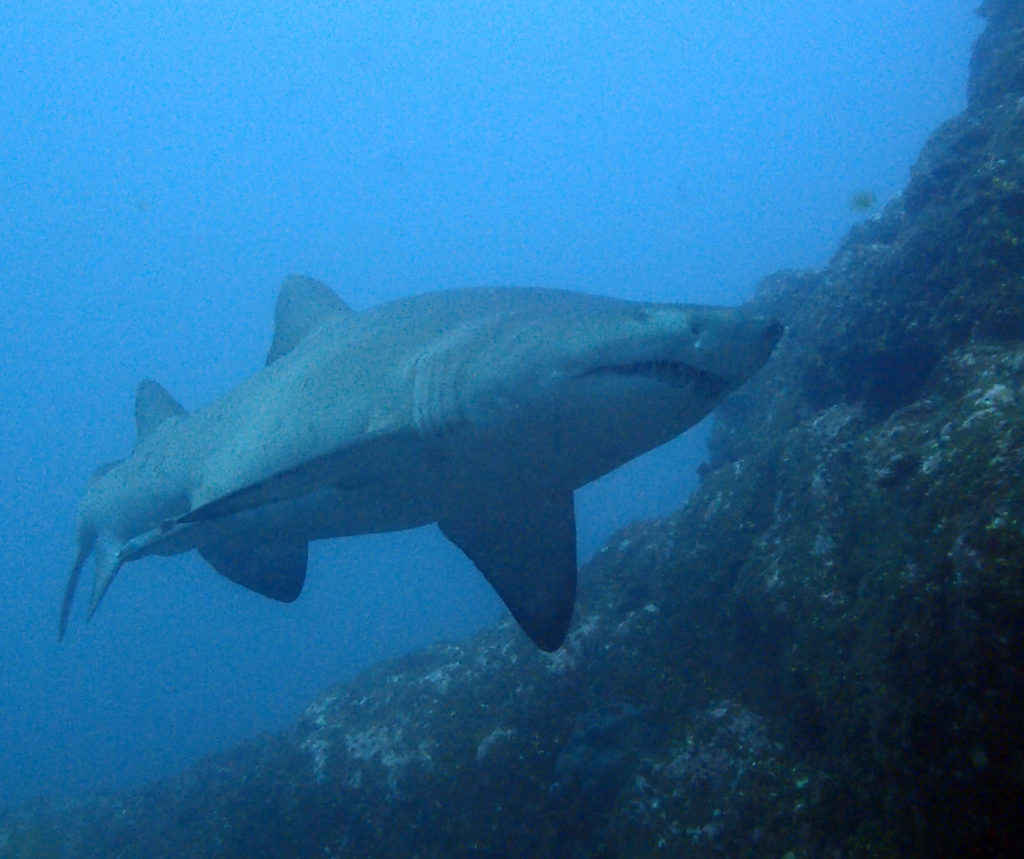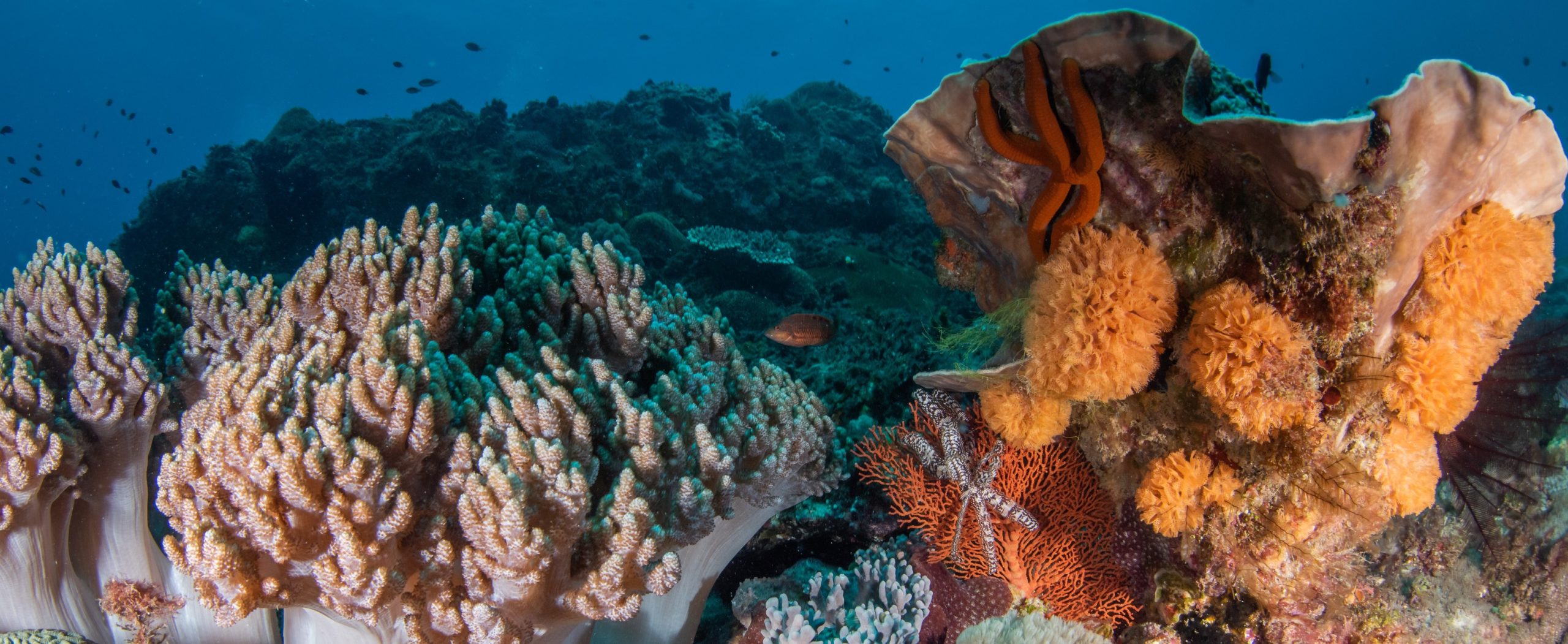The relaxed and noted divers of the Australian east coast, north and south, gathered in Port Stephens for the decade’s annual count. And the word had passed around that the weather would be fine though the seas they kept on rolling to and from that Broughton land.
14 divers with the assistance of support crew completed 38 surveys/transects inshore and offshore in mixed conditions that were ameliorated by the relatively warm waters of 20 – 21 degrees.
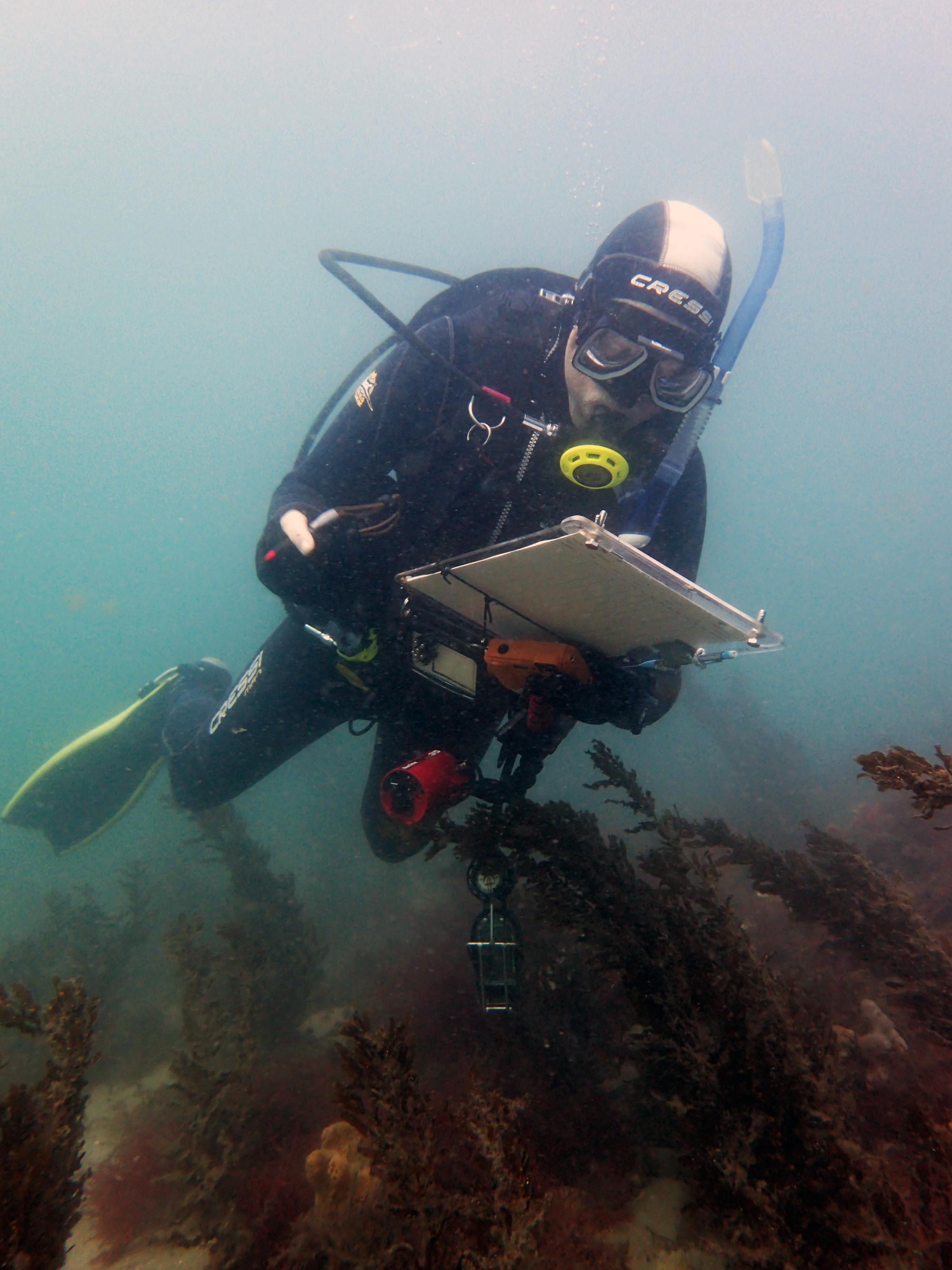
Though the Broughton Island surveys on Friday held some of our interesting local colour, Neon Damsel (Pomacentrus coelestis), Cut-ribbon Wrasse (Stethojulis interrupta), Diamond Wrasse (Anampses caeruleopunctatus), Gunthers Butterflyfish (Chaetodon guentheri) and some large over-friendly Comb Wrasse (Coris picta), we were more than rewarded for our hard work on Sunday with some lovely Grey Nurse Shark (Carcharias taurus) activity on the last dive of the day.
North East North Rock has a distinctive gutter that runs perpendicular to the rock and is generally a reliable site for viewing Carcharias taurus, who appear through the clouds of Yellow-tail Scad (Trachurus novaezelandiae) to surprise and delight. The gutter is home to large schools of Eastern Pomfret (Schuettea scalaripinnis) and Small-scale Bullseye (Pempheris compressa) peppered with Black-tipped Bullseye (Pempheris affinis).
Onshore dives within Nelson Bay proved once again why Port Stephens is a natural wonderland of temperate and some tropical species. Each site within the Bay holds its own special habitats from deep walls at Halifax Point to the weedy habitat at Little Beach, the ledges of Fly Point that teem with Yellow Fin Bream (Acanthopagrus australis), Eastern Blue Groper (Achoerodus viridis), Pempheris spp., Labrid spp., Pomacentrid spp. and on up to Pipeline with its soft corals housing cryptic cowrie’s, nudibranchs and seahorses.
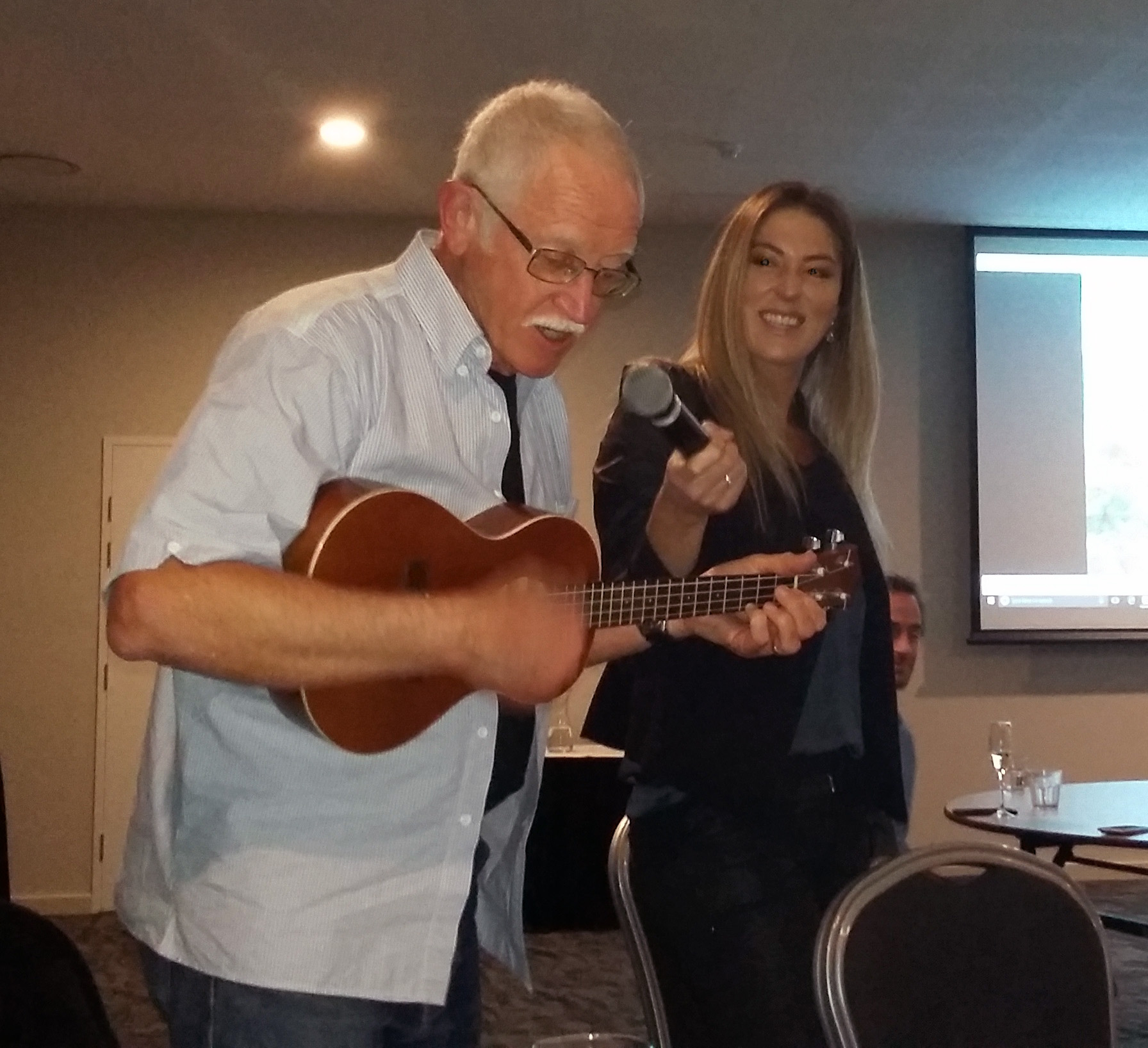
And meanwhile, back at the main house we were treated to luxurious surroundings, a most royal wedding, sing-a-longs with Bill and his ukulele, lots of laughs and great food provided by the ‘winged’- woman, Toni (MasterChef extraordinaire).
To end our brief but significant sojourn – Monday night’s East Coast celebration of a decade of achievements was, for all RLS participants, a highlight in our voyage toward mapping the world’s marine life and providing gold standard data that informs and educates. Rick, Graham and Toni spoke with alacrity and aplomb before handing out the awards and revealing to the world the “Eviota Song”.
Chorus:
Here we are, on Eviota
Monitoring the marine biota
One day soon I’ll meet my transect quota
Until then, I’ll take lots… of photos.
And a good time was had by all.
